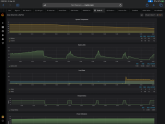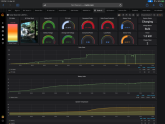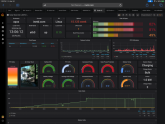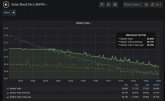BarkingSpider
Carbon Lifeform
Im building a freeware realtime software/hardware monitoring solution that provides intimate details and decision making information about a solar system.
I intend to be fully off grid in the near future and want to be self sufficient for power. My goal is complete control over every aspect of the power generation from any location and the ability to redirect solar energy when batteries are full to fully utilize every watt of power available.
Im making good progress using Linux/Pi micro servers, Wifi, Epever inverters, RS485 ModBus drivers and Grafana / Cloud infrastructure for access. I have a 10kw grid tied system and for testing I use 2kw off grid 24v setup with 4kw of AGM and 14kw of BYD LifePO4 cells.
If anyone is interested in helping me build/test an open source system that anyone can use with commodity hardware, let me know. A new forum for this would be beneficial.
Here are some of the screen shots from my Ipad of my progress so far. I can access this info from any device and from any location. Joe.


I intend to be fully off grid in the near future and want to be self sufficient for power. My goal is complete control over every aspect of the power generation from any location and the ability to redirect solar energy when batteries are full to fully utilize every watt of power available.
Im making good progress using Linux/Pi micro servers, Wifi, Epever inverters, RS485 ModBus drivers and Grafana / Cloud infrastructure for access. I have a 10kw grid tied system and for testing I use 2kw off grid 24v setup with 4kw of AGM and 14kw of BYD LifePO4 cells.
If anyone is interested in helping me build/test an open source system that anyone can use with commodity hardware, let me know. A new forum for this would be beneficial.
Here are some of the screen shots from my Ipad of my progress so far. I can access this info from any device and from any location. Joe.



Last edited:



